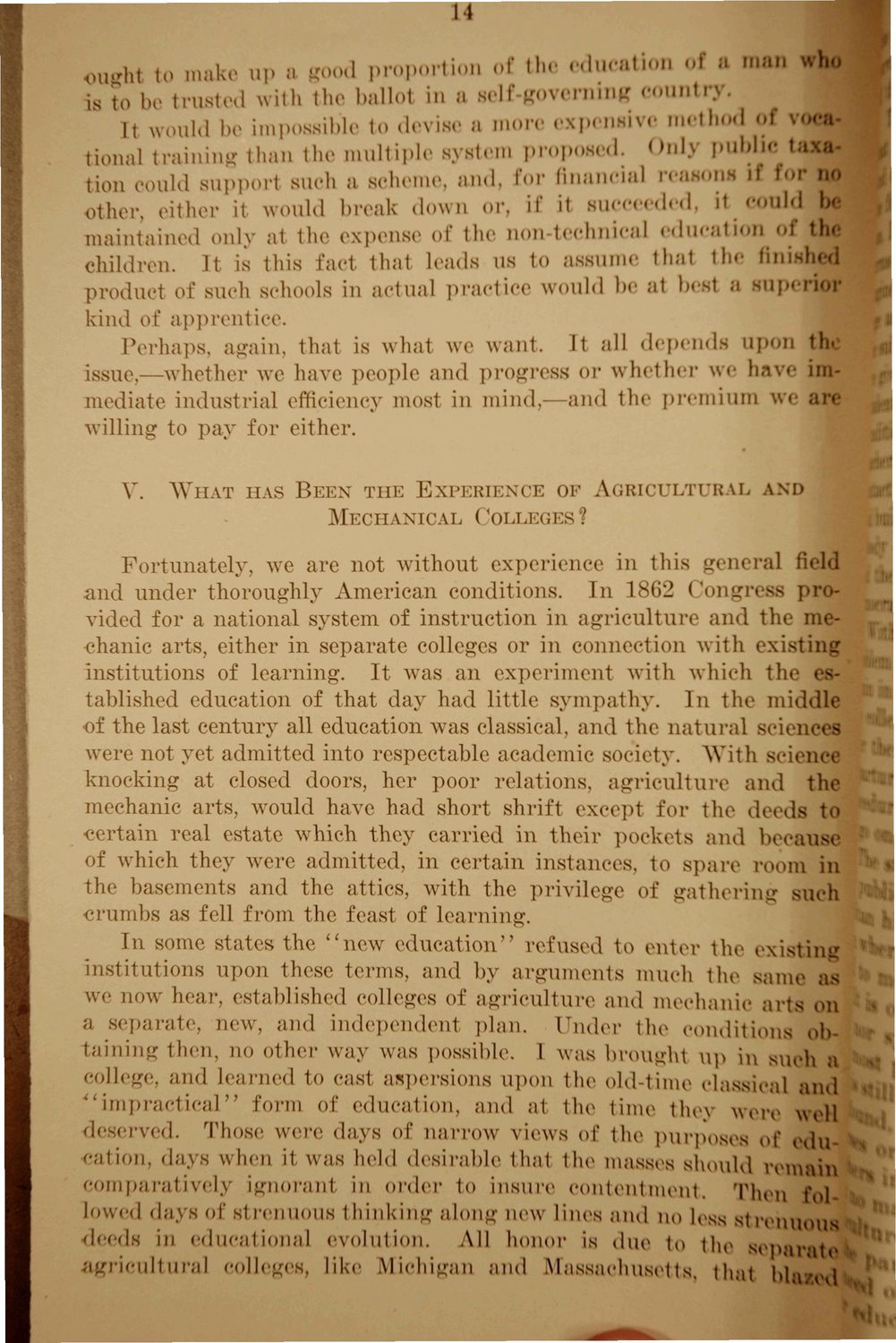| |
| |
Caption: Booklet - What is Involved in a Vocational Education (Davenport) (1915)
This is a reduced-resolution page image for fast online browsing.

EXTRACTED TEXT FROM PAGE:
to make up a good proportion of the edu ition i man wl is to be trusted with the ballol in a Belf overnin counti It would be impossible to devise a i e i naive metl d - \ tional training than the multiple system prop< Onl) pub! i lion could support such a scheme, and, for financial rea i for i other, either it would break down or, if it succeeded, it II maintained only at the expense of the D<>H technical edu iti<»i t! children. 11 is this fact thai leads us to assume thai th< fii •• product of such schools in actual practice would I at I. Dp rior kind o( apprentice. Perhaps, again, that is what we want. It all depend ii| i tl issue.—whether we have people and progress or whether we have im mediate industrial efficiency most in mind.—and the premium we re willing to pay for either. V. W H A T HAS BEEN THE EXPERIENCE OF AGRICULTUKAL AND MECHANICAL COLLEGES? >ugh1 Fortunately, we arc not without experience in this general fieL and under thoroughly American conditions. In 18(52 i ongi <s provided for a national system of instruction in agriculture and the mc ehanic arts, either in separate colleges or in connection with existing institutions of learning. It was an experiment with which tli • tablished education of that day had little sympathy. In th< middle of the last century all education was classical, and the natural scien< were not yet admitted into respectable academic society. With science knocking at closed doors, her poor relations, agriculture and the mechanic arts, would have had short shrift except for the d Is to -certain real estate which they carried in their pockets and becaufi of which they were admitted, in certain instances, to spare I • ••m in the basements and the attics, with the privilege of gathering su b crumbs as fell from the feast of learning. In some states the " n e w education" refused to enter the exist im institutions upon these terms, and by arguments much the sann we now hear, established colleges of agriculture and mechanic arts oi a separate, new, and independent plan. Under the conditions tainingthen, no other way was possible. I was brought up in Mich college, and learned to cast aspersions upon the old time classical and " i m p r a c t i c a l " form of education, and a1 the time they were well d( erved. Those were days of narrow views of the purposes of cation, days when it was held desirable that the masses should romar comparatively ignorant in order to insure contentment, Then fo] lowed days of strenuous thinking along new Lines and no ] rS s str< nuou deeds in educational evolution. All honor is due to the soi it, agricultural colleges, like Michigan and Massachusetts, that hlavd
| |